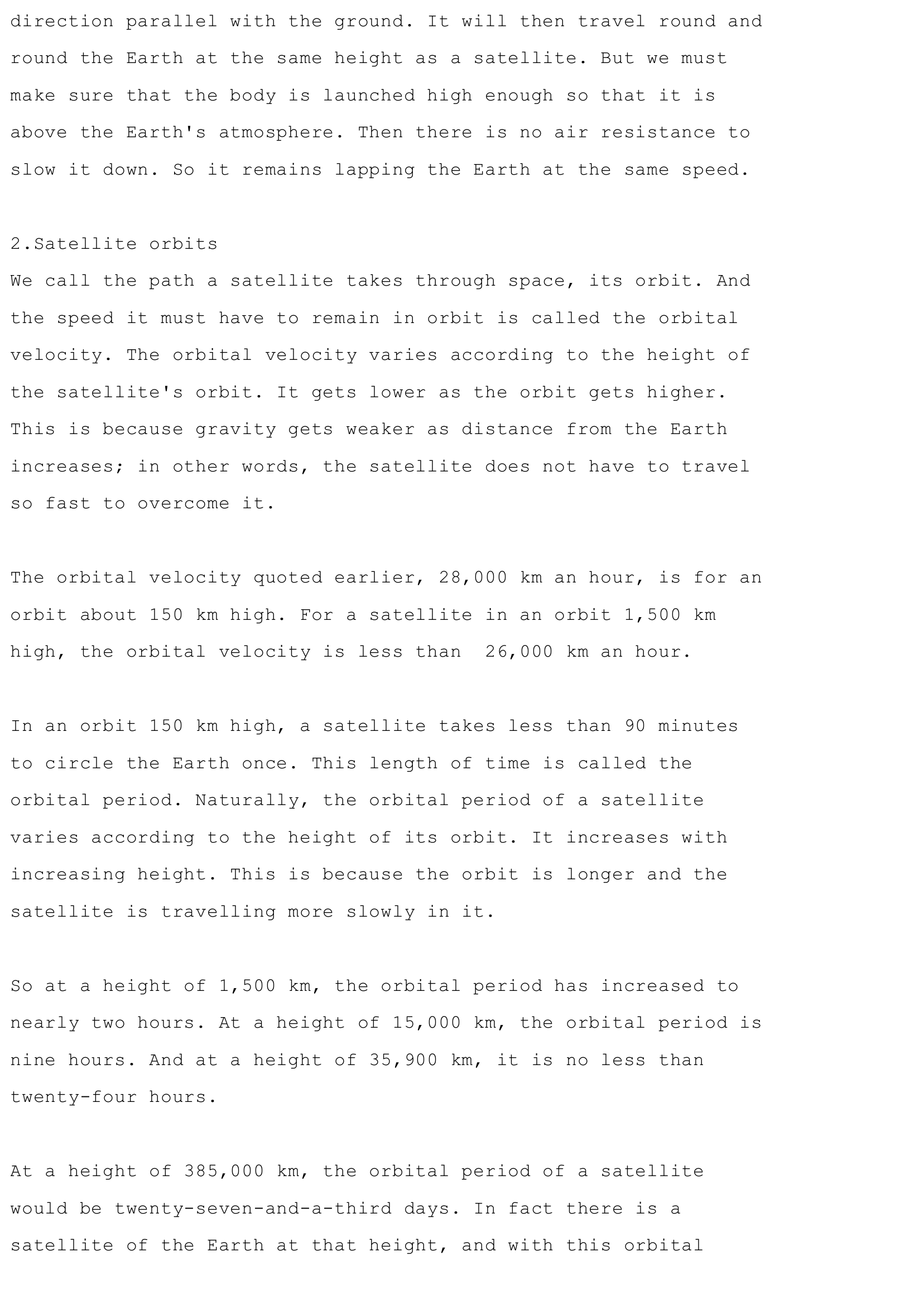SATELLITES AND ORBITS
Publié le 22/02/2012

Extrait du document
«
direction parallel with the ground.
It will then travel round and
round the Earth at the same height as a satellite.
But we must
make sure that the body is launched high enough so that it is
above the Earth's atmosphere.
Then there is no air resistance to
slow it down.
So it remains lapping the Earth at the same speed.
2.Satellite orbits
We call the path a satellite takes through space, its orbit.
And
the speed it must have to remain in orbit is called the orbital
velocity.
The orbital velocity varies according to the height of
the satellite's orbit.
It gets lower as the orbit gets higher.
This is because gravity gets weaker as distance from the Earth
increases; in other words, the satellite does not have to travel
so fast to overcome it.
The orbital velocity quoted earlier, 28,000 km an hour, is for an
orbit about 150 km high.
For a satellite in an orbit 1,500 km
high, the orbital velocity is less than 26,000 km an hour.
In an orbit 150 km high, a satellite takes less than 90 minutes
to circle the Earth once.
This length of time is called the
orbital period.
Naturally, the orbital period of a satellite
varies according to the height of its orbit.
It increases with
increasing height.
This is because the orbit is longer and the
satellite is travelling more slowly in it.
So at a height of 1,500 km, the orbital period has increased to
nearly two hours.
At a height of 15,000 km, the orbital period is
nine hours.
And at a height of 35,900 km, it is no less than
twenty-four hours.
At a height of 385,000 km, the orbital period of a satellite
would be twenty-seven-and-a-third days.
In fact there is a
satellite of the Earth at that height, and with this orbital.
»
↓↓↓ APERÇU DU DOCUMENT ↓↓↓
Liens utiles
- Ideology and Rationality in the History of the Life Sciences
- Relationship between religion, spirituality, and young Lebanese university students’ well-being.
- Course of reading and writing for 1st year English Licence
- dance and the different types of choreographie process
- Fiche de lecture sur le chapitre 11: The Greek of the New Testament, par Mark Janse, sur la section IV de l’ouvrage, intitulé: Ancient Greek: structure and change, pages 646-653.


















